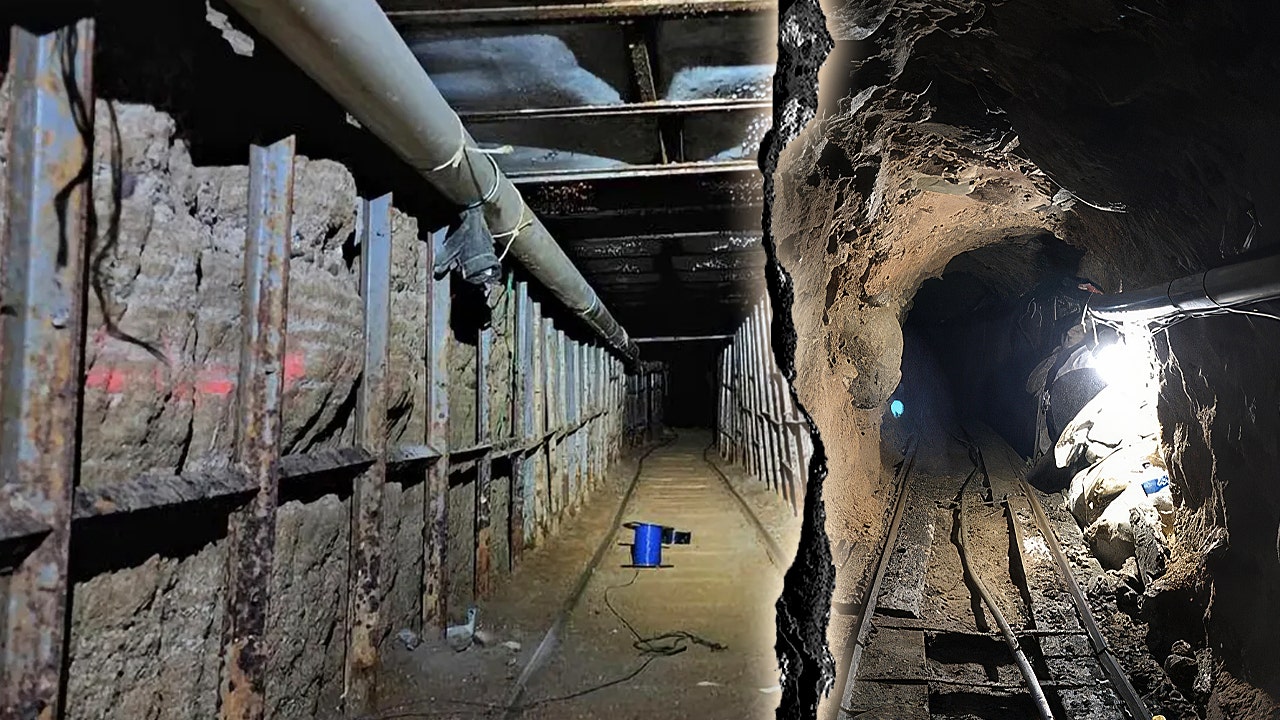United States
Feds likely eyeing ‘cover-ups’ to bust Mexican cartels along border: former DEA agent

The Sophisticated Network of Drug Tunnels: A Challenge for Border Security
The discovery of elaborate drug-smuggling tunnels constructed by Mexican cartels has unveiled a daunting challenge for U.S. border security. These tunnels, equipped with advanced rail systems, highlight the cartels’ ingenuity and resources in evading detection. The Trump administration has vowed to combat this issue, yet the tunnels remain a persistent threat. According to the U.S. Drug Enforcement Agency (DEA), while most illicit drugs enter throughSouthern border checkpoints, a significant portion traverses these subterranean passageways. The 107,941 drug-related overdose deaths in 2022 underscore the urgency of addressing this issue.
Inside the Tunnels: Engineering Marvels of the Underworld
These tunnels are not crude burrows but sophisticated underground structures, resembling mini-cities. Equipped with ventilation systems, rail tracks, and even office spaces, they facilitate efficient drug transport. Michael Brown, a former DEA agent, compares their complexity to Hamas’s tunnels in Gaza, noting that cartels have greater financial resources. These structures are camouflaged behind innocuous storefronts, such as "Joe’s Pizza," making detection difficult. The challenge for authorities lies in identifying these hidden entrances, often blending seamlessly into urban landscapes.
Law Enforcement Strategies: Combating Underground Narcotics
To combat this, DEA and Homeland Security agents employ various tactics. Destroying tunnels is a primary approach, rendering them unusable. However, Brown suggests a more proactive strategy, such as intelligence gathering and incentivizing informants. The historical use of tunnels in conflicts, like the Vietnam War, illustrates their enduring strategic value. While the U.S. does not adopt extreme measures like Israel’s flooding tunnels, the situation demands innovative solutions. The significant drop in border crossings under Trump’s policies signals progress, but tunnels remain a critical blind spot.
The Human Impact: Beyond Statistics
The drug crisis exacts a heartbreaking toll, with each overdose a tragedy for families. The lives lost in 2022 represent not just numbers but loved ones. Brown’s insights highlight the need for empathy and understanding in policy-making. The decrease in border crossings suggests effective enforcement, yet the tunnels persist as a vulnerable gateway for drugs. Addressing this issue requires compassion and a commitment to saving lives.
Looking Ahead: Strategies for a Secure Future
Moving forward, the U.S. must balance security with humanity. The lessons from historical conflicts offer insights into combating tunnels. Enhancing international cooperation and investing in technology could provide new avenues for detection. The human element—lives lost and communities affected—reminds us of the stakes involved.
In conclusion, the battle against drug tunnels is intricate, involving strategic, legal, and compassionate considerations. It demands a sustained effort to protect lives and communities while acknowledging the complexity of the issue.


















